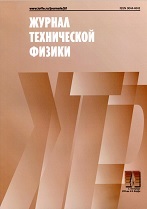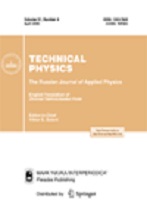|
Physical electronics
Te-hyperdoped silicon layers for visible-to-infrared photodiodes
F. F. Komarovab, S. B. Lastovskyc, I. A. Romanovd, I. N. Parkhomenkod, L. A. Vlasukovad, G. D. Ivlevd, Y. Berencene, A. A. Tsivakof, N. S. Koval'chukf, E. Wendlerg
a A. N. Sevchenko Research Institute of Applied Physical Problems, Belarusian State University, Minsk
b National University of Science and Technology «MISIS», Moscow
c Scientific-Practical Materials Research Centre of NAS of Belarus
d Belarusian State University, Minsk
e Helmholtz-Zentrum Dresden–Rossendorf, Institute of Ion Beam Physics and Materials Research, Germany
f JSC "INTEGRAL", Minsk
g Friedrich-Schiller-University, Jena, Germany
Abstract:
Silicon layers doped with tellurium up to concentration (3–5)$\cdot$10$^{20}$ cm$^{-3}$ have been formed by ion implantation with subsequent pulsed laser annealing. It was shown that 70–90% of the introduced impurity is in the substitution position in the silicon lattice. Si layers Tellurium-hyperdoped silicon layers exhibit significant absorption (35–65%) both in the visible and near IR (1100–2500 nm) spectral ranges, and the absorption increases with increasing wavelength. The current-voltage and capacitance-voltage characteristics, as well as the photosensitivity of photodetectors based on Te-doped silicon layers have been presented and discussed. The residual structural defects in implanted Si layers have been considered by deep-level transient spectroscopy.
Keywords:
silicon, hyperdoping, tellurium implantation, laser annealing, impurity subband, deep-level transient spectroscopy.
Received: 13.05.2021
Revised: 03.08.2021
Accepted: 05.08.2021
Citation:
F. F. Komarov, S. B. Lastovsky, I. A. Romanov, I. N. Parkhomenko, L. A. Vlasukova, G. D. Ivlev, Y. Berencen, A. A. Tsivako, N. S. Koval'chuk, E. Wendler, “Te-hyperdoped silicon layers for visible-to-infrared photodiodes”, Zhurnal Tekhnicheskoi Fiziki, 91:12 (2021), 2026–2037
Linking options:
https://www.mathnet.ru/eng/jtf4849 https://www.mathnet.ru/eng/jtf/v91/i12/p2026
|


| Statistics & downloads: |
| Abstract page: | 169 | | Full-text PDF : | 60 |
|



 Contact us:
Contact us: Terms of Use
Terms of Use
 Registration to the website
Registration to the website Logotypes
Logotypes